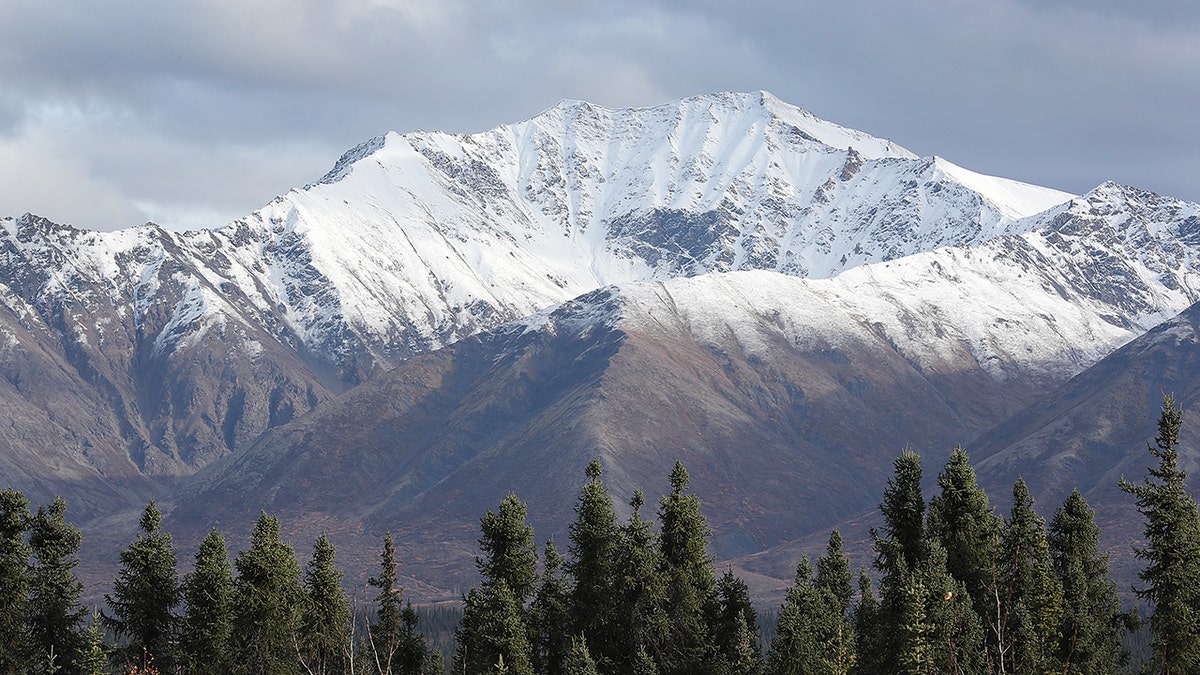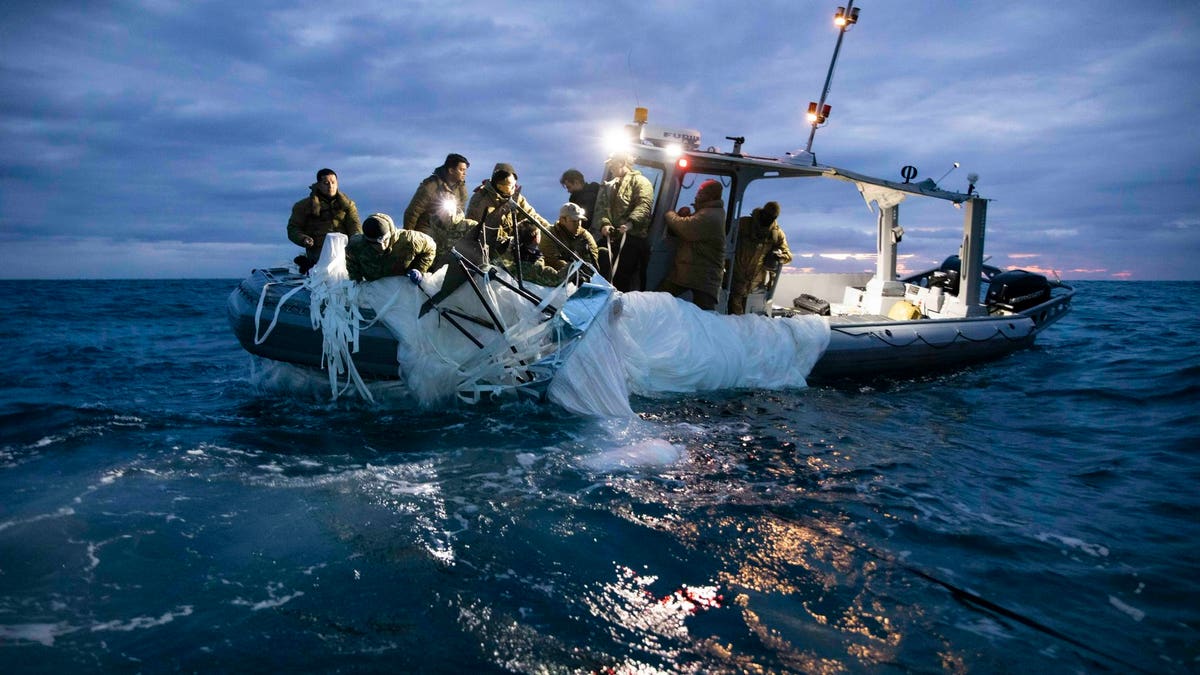China dubs US response to sky flight 'hysterical'
Sen. Eric Schmitt, R-Mo., joined 'Sunday Morning Futures' to discuss the threat China poses to the U.S. and FEMA's response to the Ohio train derailment.
Events over the past month have been a useful reminder for our fellow Americans that Alaska holds a far more strategic position on the globe than our typical depiction in a box at the bottom of a map would indicate.
Most know that Alaska is huge, at two-and-a-half times the size of Texas. Fewer may know that we’re not only the farthest north and west state; we are also the farthest east. We’re so far east that the International Dateline has to jog around the island of Attu in the Aleutian chain to divide us from Russian territory.
We’re so far east that we’re closer to Australia than California is.
CHINA THREATENS US WITH 'CONSEQUENCES' OVER SPYCRAFT SHOOTDOWN, SAYS IT WILL NOT 'FLINCH'
This isn’t just some trivia to impress your friends at your next get-together, but to illustrate Alaska’s critical importance to our national defense.

This beautiful view near Denali, Alaska, is how many Americans envision the nation's largest state. But it is also on the front lines against America's enemies. (Photo by Joe Raedle/Getty Images)
At just a few miles from Russian territory, just a few hours from China, and within potential striking distance of North Korean missiles, Alaska is truly a frontier outpost standing on the front lines in between a rough neighborhood and North America.
Of the four objects shot down since Feb. 4, three have transited Alaska, and two were shot down by F-22 Raptors based at Joint Base Elmendorf-Richardson, or JBER, in Anchorage on consecutive days Feb. 10 and 11.
There is much we still don’t know about these incidents, and the Biden administration did little to reassure the public on Feb. 16 by announcing that the three objects shot down after the Chinese spy balloon were likely harmless private craft conducting some kind of research.
Not only that, but intelligence officials are now telling the public that the U.S. tracked the Chinese spy balloon from the moment it took off and still allowed it to transit the entire nation from Hawaii to Alaska to South Carolina.
Alaska – already home to long-range radar, missile defense interceptors, and more fifth-generation fighter jets than anywhere in the world – will naturally be at the forefront of these efforts, and we stand ready to support our national defense as we always have dating to before statehood.
How a hostile act went unanswered for days while other, apparently benign, objects were shot down immediately, is a question that remains unanswered.
One fact is clear, however, based on the two subsequent shootdowns: the Defense assets in Alaska were capable of stopping this Chinese spy balloon before it reached the Lower 48.
Intercepting Russian reconnaissance craft, fighter jets, and bombers is nothing new here in Alaska. On Feb. 13, two Russian bombers and two fighter jets were intercepted in the Alaska Air Defense Identification Zone. (This isn’t U.S. airspace, but rather the boundary that triggers a military response when it’s approached or entered.)
Last August, Alaska-based pilots intercepted Russian reconnaissance planes on three straight days during Air Force Red Flag training exercises.
These intercepts have thankfully occurred without incident, as well-trained pilots on both sides of the border understand the rules and norms of engagement and conduct themselves accordingly.
In contrast, high-altitude unmanned balloons or other flying objects with unknown payloads represent a potentially new challenge that will require a new response.
Alaska – already home to long-range radar, missile defense interceptors, and more fifth-generation fighter jets than anywhere in the world – will naturally be at the forefront of these efforts, and we stand ready to support our national defense as we always have dating to before statehood.
The potential threat from unmanned aircraft isn’t the only emerging situation that the U.S. must be prepared for where Alaska is on the front lines.

American forces recover debris from a shot-down Chinese surveillance balloon in South Carolina. Former National Security advisor John Bolton said he will receive a briefing from the Biden administration Wednesday about the recent incursions by Chinese spycraft into the United States. (US Fleet Forces)
More traditional displays of naval power have been increasing in recent years from both Russia and China.
Last September, the Coast Guard cutter Kimball on routine patrol in the Bering Sea encountered three Chinese and four Russian ships moving in a single formation, including a Chinese guided missile cruiser and a Russian destroyer, about 86 miles north of Kiska.
A little more than a year earlier, the Kimball encountered four Chinese ships sailing within 46 miles of the Aleutians.
As China and Russia strengthen their ties amid the Ukraine conflict, they’ve pledged to increase their cooperation in the Arctic. We need to take this seriously and prepare accordingly.
One fact is clear, however, based on the two subsequent shootdowns: the Defense assets in Alaska were capable of stopping this Chinese spy balloon before it reached the Lower 48.
Again, Alaska stands ready. In fact, we are already home to a former naval base on the island of Adak that was constructed in 1942 in preparation for the battle to eject Japanese invaders from U.S. territory after they bombed Dutch Harbor and occupied Attu and Kiska.
Once home to as many as 6,000 Naval personnel, Adak was decommissioned in 1997 during post-Cold War base closures. It would take time and expense to reopen this base, but the possibility should be considered so long as China and Russia increase their cooperation and Naval activity in U.S. waters off the coast of Alaska.
CLICK HERE TO GET THE OPINION NEWSLETTER
One asset where the U.S. desperately needs to catch up is our inadequate number of icebreakers.
The U.S. is an Arctic nation because of Alaska, yet we are woefully behind with just two aging vessels compared to Russia’s fleet of more than 50. China, which has declared itself a "near Arctic nation", has the same number of icebreakers that we do, and is building more as we speak.

Gen. Billy Mitchell, regarded as the father of the United States Air Force, declared shortly before his death that "whoever holds Alaska will hold the world." (Dept of Defense)
Gen. Billy Mitchell, credited as the father of the Air Force, told Congress in 1935 that "whoever holds Alaska will hold the world."
CLICK HERE TO GET THE FOX NEWS APP
The events of the past month have proven this declaration of Alaska’s strategic importance is as true now as it was then.
Our defense policies and priorities must reflect this role for Alaska, and we must deploy the assets necessary to ensure the Last Frontier remains the bulwark for our fellow Americans and allies against anyone who would threaten us.






















